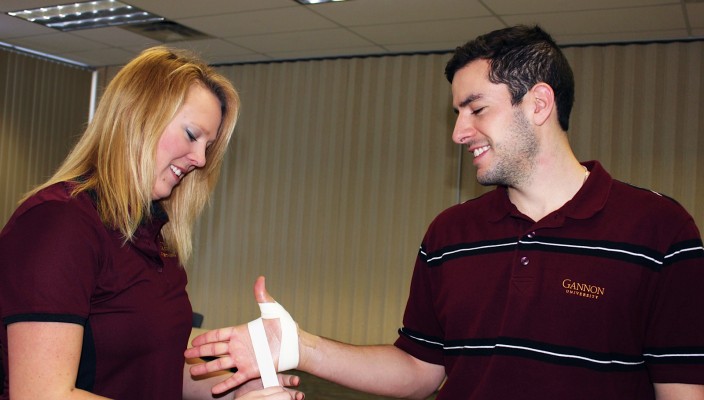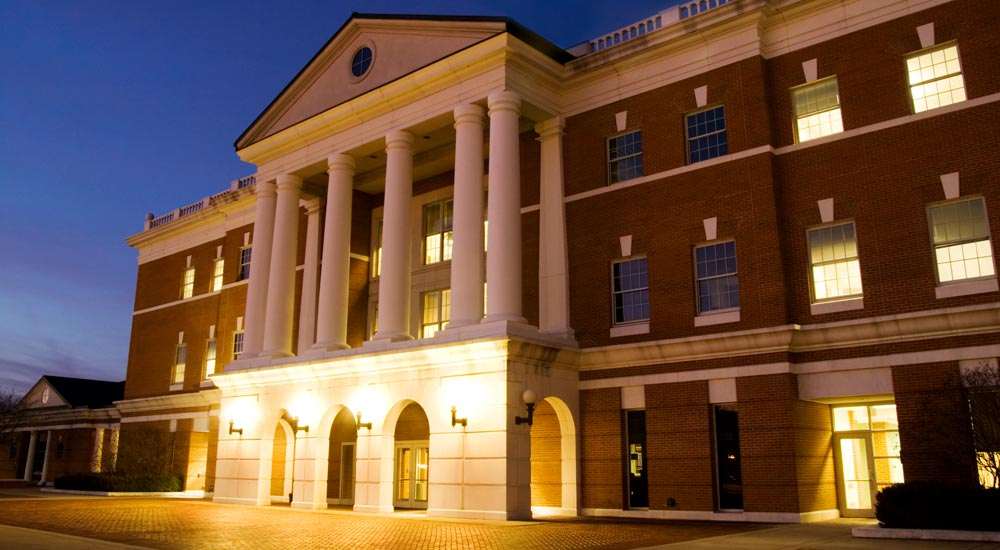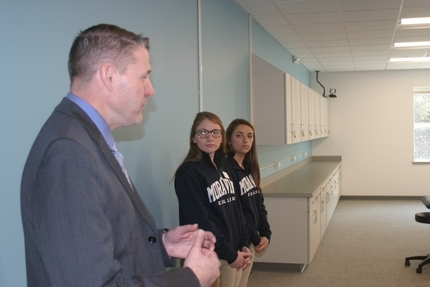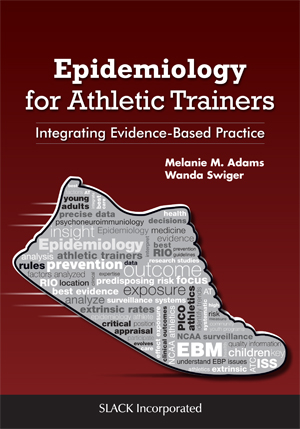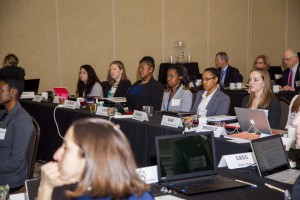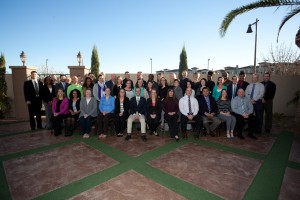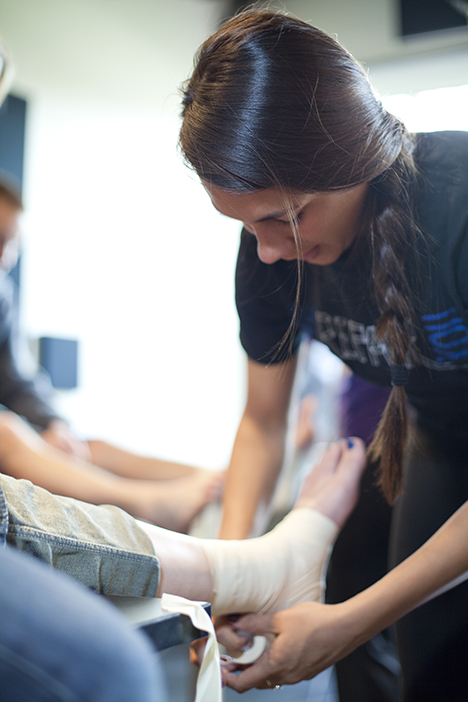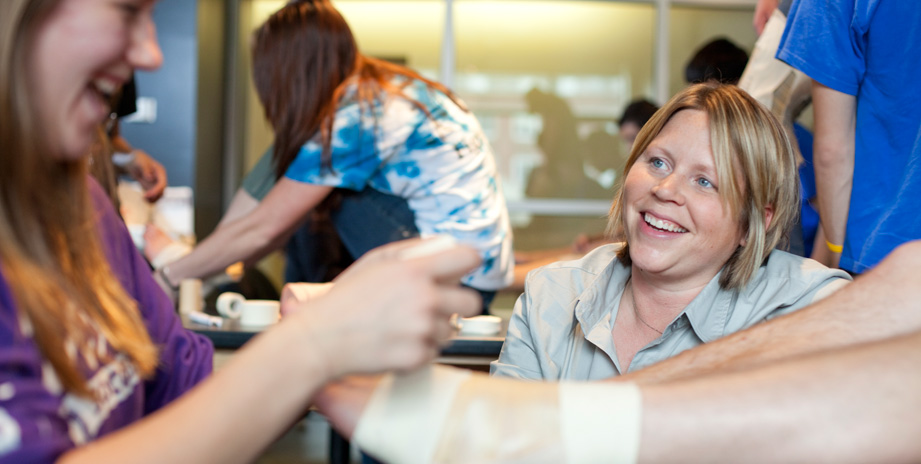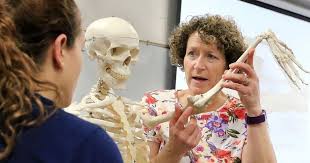
For two decades, Franklin College has offered a nationally renowned undergraduate program for athletics training. But that’s about to change.
Franklin is launching a master’s program in athletics training this summer, the first masters program of any kind, in any discipline, at the college.
The move coincides with the gradual phasing out of the school’s undergraduate athletic training program, directed the past 17 years by Kathy Remsburg.
The undergraduate program will continue through the 2016-17 and 2017-18 school years.
“With the athletic training program that we’ve had, students would come in freshman year, go four years, graduate and then go on to take their national board of certification exam to become certified as an athletic trainer,” Remsburg said. “With the master’s program you’re not accepted into the program until after your junior year if you come through Franklin College.
“If you come through another school then you have already obtained a bachelor’s degree.”
In the spirit of the National Athletic Training Month, Franklin College is attempting to raise the profile a profession that is not well understood by the general public.
“A lot of people still don’t know 100 percent what an athletic trainer does. We are the ones who diagnose, evaluate, treat and rehabilitate injuries,” said Chris Shaff, head athletic trainer since 2002.
The master’s program is headed by Jen Austin, Director of Masters of Science in Athletic Training at Franklin College.
Remsburg said if a student comes up through Franklin College, he or she will be taking classes pertaining to their undergraduate major as well as some master’s programs.
“Athletic training has become much more science-based,” Remsburg said. “They don’t want us doing treatments just because.
“They want us to be able to apply the treatments that we’re doing on an athlete to have a specific outcome so it’s much more science-oriented and outcome-oriented.”
Building a reputation
Franklin exceptional reputation in athletics training is due largely to Remburg’s foresight and dedication, according to colleagues. She became the school’s first certified athletic trainer in 1990 and served that role through 1999.
She estimates the undergraduate athletics training program has produced 110 graduates.
“(Franklin’s reputation) is based on the strength of how the program is designed, and the top-quality students that have gone through the program,” Austin said. “Kathy has some high expectations that she demands from her students, and they deliver.”
Marcus Davis, a 2002 Franklin College graduate, agrees.
Davis has been the athletics trainer at Franklin Community High School for 14 years. He attributes his successful career to the quality of the Franklin College program.
“It starts at the top. It starts with Kathy,” Davis said. “It’s a little nerve-wracking the first time you sit down with her. Her name carries so much weight. She’s going to be the (resume) reference, and if she gets you in the door you don’t want to let her down.
“It’s the way she prepares us. Kathy’s going to teach you some things, but she’s going to let you go out there and experience real-life scenarios and learn from your mistakes.”
A hands-on approach
Once admitted into the undergraduate program, students average around 250 hours of clinical time working with athletes. Remsburg said there are certain competencies and tasks students must be proficient in or they will not be able to continue.
Those experiences, coupled with smaller class sizes (approximately eight students per graduating class), makes Franklin College unique in athletic training.
“What benefited me the most was class size and that we had the hands-on access to our athletes to be able to evaluate them,” said Whiteland Community High School athletic trainer Travis Smarelli, a 2010 Franklin College graduate. “It makes a difference.
“You can see the confidence in your skills because you’ve seen the injuries before.”
Remsburg said a high percentage of students pursuing athletics training as a career are former athletes.
Davis, for instance, played soccer, basketball and baseball at Madison Shawe High School in southern Indiana. Smarelli played football and ran track at Whiteland.
“What draws you to the profession is you see it,” Smarelli said. “A lot of athletic trainers are former athletes themselves who at one time were injured. I was told once to find a career that’s interesting and always in demand. People are always playing (sports) and people always get hurt.
“There have probably been 10 days in the last six years where I felt like I was working.”
Change of heart
A 1983 University of Indianapolis graduate, Remsburg initially thought a career in physical therapy sounded enticing.
But unenthusiastic nature of those around her while serving an internship caused her to rethink her career path. She went on to earn a master’s degree in athletic training from Illinois State University.
Remsburg has since gone on to be part of the sports medicine team at the 2000 Summer Olympics in Sydney, Australia. Among other honors, she was inducted into the Indiana Athletic Trainers Association Hall of Fame in 2005.
But she regards establishing, and growing, the Franklin College program as her top achievement.
“It’s very rewarding. I’m proud of where we started and where the program has come,” Remsburg said. “It’s not uncommon for employers to call me directly, saying, ‘Hey, I have this job opening. I don’t want to post it, but I know I want one of your students.’
“The profession of athletic training continues to grow. There are more and more opportunities for athletic trainers to be employed. But probably the most exciting part for me is to be able to look back and see how many students I’ve had an opportunity to impact, and just seeing how much they enjoy their jobs.”
THE REMSBURG FILE
Name: Kathy Remsburg
Age: 54
Born: Bowling Green, Ohio
Family: Husband, Cole; sons, Nick, 27, Jayden, 22, Nolan, 17
High school: Naperville North (1979)
College: University of Indianapolis (1983)
Favorite food: Chocolate
Favorite movie: “Lost in Time”
Favorite athlete: Mark Spitz
Favorite team: Cleveland Browns
CLICK HERE FOR ORIGINAL ARTICLE
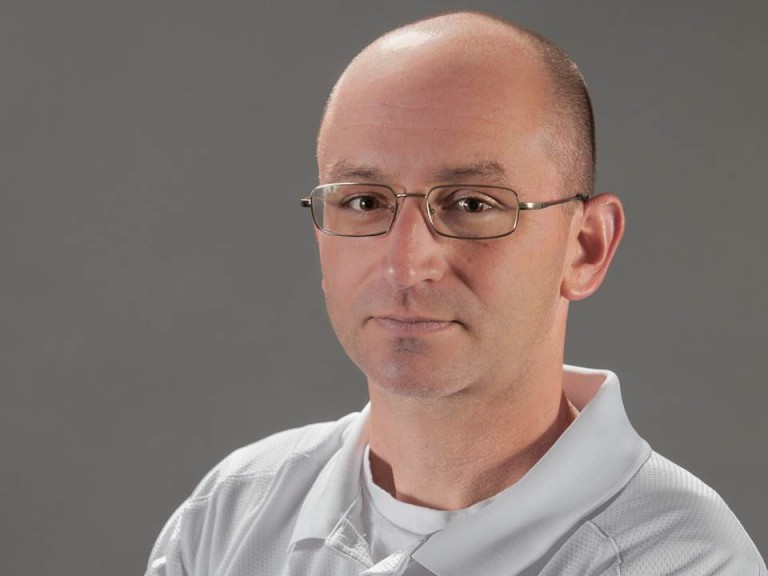
 The award is given to companies and institutions that go above and beyond the legal requirements of the Uniformed Services Employment and Reemployment Rights Act by providing their Guard and Reserve employees additional, non-mandated benefits such as differential or full pay to offset lost wages, extended health benefits and other similar benefits.
The award is given to companies and institutions that go above and beyond the legal requirements of the Uniformed Services Employment and Reemployment Rights Act by providing their Guard and Reserve employees additional, non-mandated benefits such as differential or full pay to offset lost wages, extended health benefits and other similar benefits.